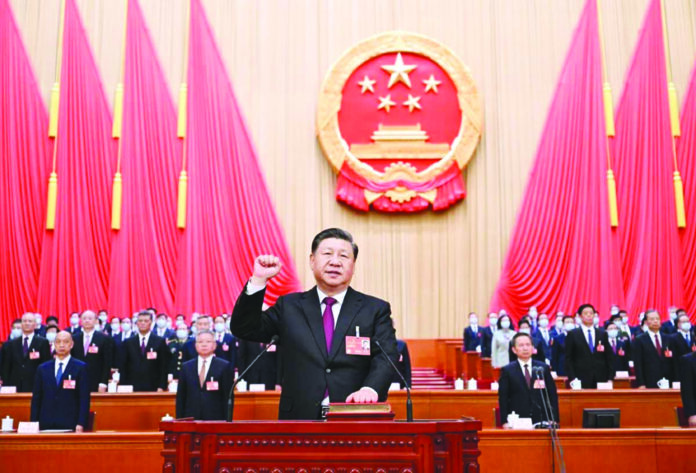In 1945, the world transitioned into a new form of war and competition. The world experienced the bipolarity of the international system. From 1945 to 1990, the American Order captured hegemony through the soft power and excellence of values that characterized the Washington-based order. After the disintegration of the USSR, the world entered a new phase of US hegemony. With the advent of authoritarian capitalism, China emerged as a potent power to counter American hegemony and cultural capital in the 21st century. There is not an iota of doubt about the potentiality of the Chinese order in the last few years, but the persistent norms and appeal of society are still based on the American order. This century is the war of the Cultural Revolution rather than the economic system because China has already accepted the capitalist form of economic growth in the international order.
Quoting from Foreign Affairs, the American order is like the layers of an onion. The US-led international order has multiple layers. On the outside are its liberal internationalist notions and tasks, through which the USA has delivered the globe a “third way” between the anarchy of nations furiously contending with each other toe to toe and the arrogant ranking of imperial systems— an arrangement that has provided more profits for more people than any preliminary option. On the exterior, the USA has profited from its landscape and its extraordinary trajectory of political expansion. It is located in such a position where oceans separate it from the other international powers, its landmass encompasses both Asia and Europe, and it accrues leverage by playing an extraordinary position as a global power balancer. Considering this, the USA had critical opportunities in the 20th century to form blocs of like-minded states that contour and embed global statutes and organizations.
As the contemporary emergency in Ukraine exhibits, this capacity to muster unions of democracies stays one of the USA’s most important assets. Under the kingdom of administration and diplomacy, the US domestic civil set up— enhanced by its multiracial and multicultural settler base— integrates the nation to the globe in webs of influence elusive to China, Russia, and other countries. Ultimately, at the nucleus, one of the sources of the USA’s incredible resilience is its capability to flunk; as a liberal society, it can recognize its openness and mistakes and pursue ways to enhance them, giving it a specific advantage over its illiberal opponents in engaging emergencies and lapses. No other nation on the face of the earth has appreciated such an extensive set of benefits from bargaining with other nations. This is the explanation why the USA has had such staying power for such an extended period, despite occasional losses and dissatisfactions.
This wrangle between liberal and illiberal world orders is an echo of the incredible competition of the 20th century. In key premature moments— after the decisions of the two world wars and the Cold War— the USA progressed toward a developed schedule for world order.
The effort between the USA and its adversaries, China and Russia, is a contest between two opposite logics of world order. The USA protects a multinational edict it has directed for three-quarters of a century— one that is open, multilateral, and anchored in security agreements and cooperation with another liberal democratic countries. China and Russia pursue an international declaration that dethrones Western liberal norms— one that is more gracious to regional unions, globes of influence, and dictatorships. The USA maintains a transnational order that defends and increases the attraction of liberal democracy. China and Russia, each in its own way, wish to create an international order that safeguards autocratic rule from the ominous leverages of liberal modernity.
This wrangle between liberal and illiberal world orders is an echo of the incredible competition of the 20th century. In key premature moments— after the decisions of the two world wars and the Cold War— the USA progressed toward a developed schedule for world order. Its conquest rested fairly on the candid validity of US power and the country’s unrivaled financial, technical, and military abilities. The USA will hang around at the depths of the world system in part because of these worldly capacities and its position as a pivot in the international equilibrium of power. The military, technological and soft power of the USA allocate it an upper-hand in the 21st century.






















